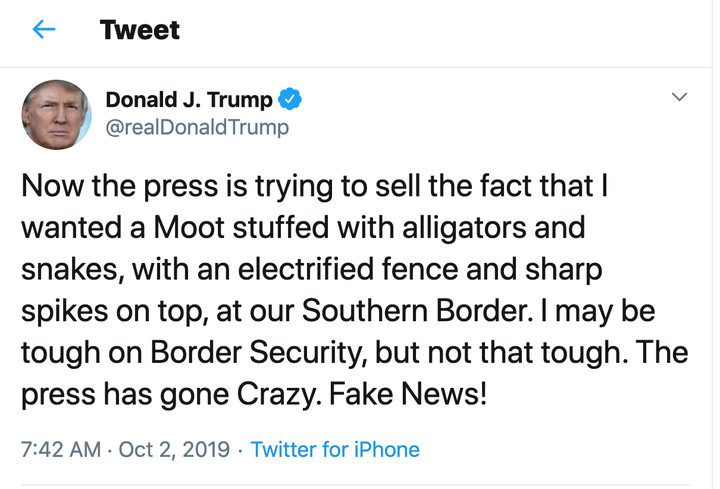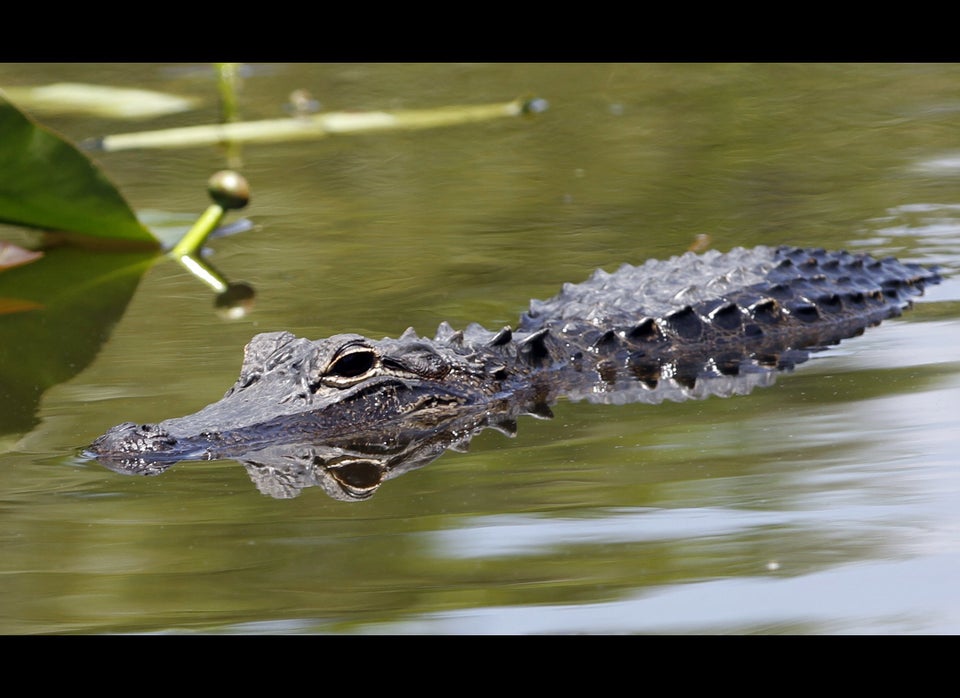The report that President Donald Trump once suggested fortifying the country’s southern border with a moat stocked with snakes or alligators continues to stir up his “e-moat-ions.”
On Wednesday, the president went on Twitter to attack The New York Times for reporting that he has previously considered shooting immigrants in the legs as part of a border security plan.
Spoiler alert: The words “fake news” appeared in the tweet. as well as a reference to the aforementioned moat.
The president previously brought up the moat on Tuesday in a since-deleted tweet where he misspelled it as “moot.”

Not surprisingly, Trump’s idea of a thousand-mile moat filled with assumed-to-be-vicious reptiles has managed to attract some skeptics.
Scott Boback, a biology professor and herpetologist at Dickinson College in Carlisle, Pennsylvania, said that while alligators have been known to attack people, there’s no guarantee they can do it on cue.
“They are wild animals and they’re not the type you can train to do much more than walk around a maze,” he said.
As for poisonous snakes? Well, that’s crawling into a different kind of problem area, Boback said.
“There are venomous snakes in U.S. that live in the water, but they don’t get halfway through Texas,” he said. “In the American Southwest, there are coral snakes and rattlesnakes, both of which are venomous, but neither of which live in the water.”
Boback surmised that the idea of a reptile-filled moat could have a theoretical deterrent factor, but another reptile expert says that’s only likely to happen with people unfamiliar with the creatures.
Kate Jackson, an associate biology professor at Whitman College in Walla Walla, Washington, says gators and snakes are necessary parts of their ecosystems and pose no threat to Americans.
“You will never find a person who is knowledgeable about snakes or gators who is afraid of them in this way,” she said.
Jackson said that people who think they fear snakes “are actually afraid of the unknown.”
“That’s why they are not afraid of cars ― cars are the known ― but are afraid of snakes, which are the unknown,” she said.
Assuming enough gators and poisonous snakes can be captured to fill a moat that stretches along the entire U.S.-Mexico border, there’s still a nagging issue: building the moat.
A very cursory Google search reveals businesses with the name “moat” but none (at least on the first page) that advertise moat-building as a service.
However, “Defending Your Castle,” a 2014 book by William Gurstelle, does offer some basic tips on moats for the average homeowner.
Gurstelle declined to comment for this story, but an excerpt that appeared in Gizmodo shortly after the book’s release offers some helpful tips before building any moat.
- A moat needs a dependable water source. For instance, a 12-foot-wide moat, 200 yards long and 6 feet deep, will require an initial fill of nearly 500,000 gallons.
- Moats built in cold weather areas could freeze over in winter, negating the most important security feature.
- Without regular maintenance, moats with stagnant water can have high insect populations, offensive odors, and unsightly trash buildup.
- Since not many modern-day building contractors have experience building moats, prospective contractors should have previous projects that have included large water-holding structures under their belt.
At this point, it looks like the moat is all wet.


